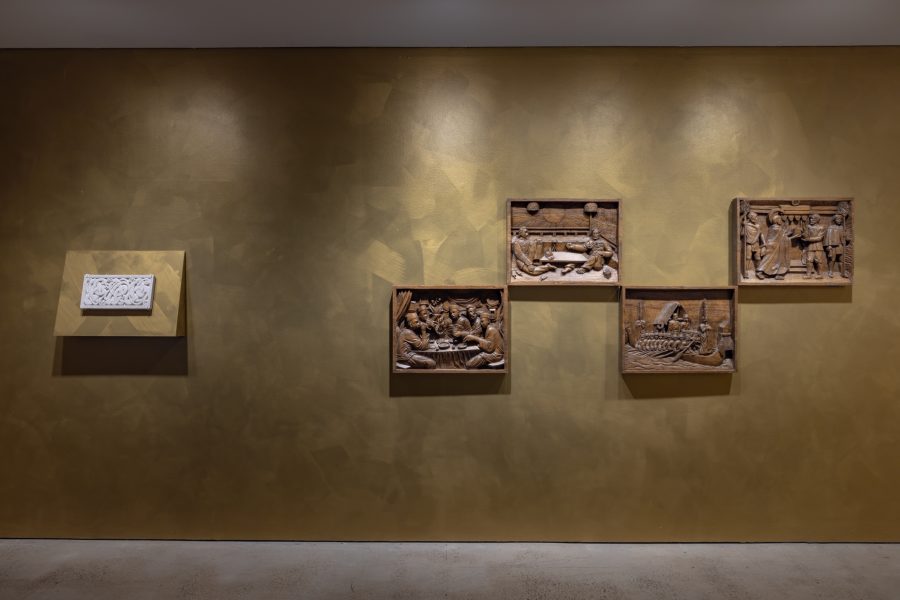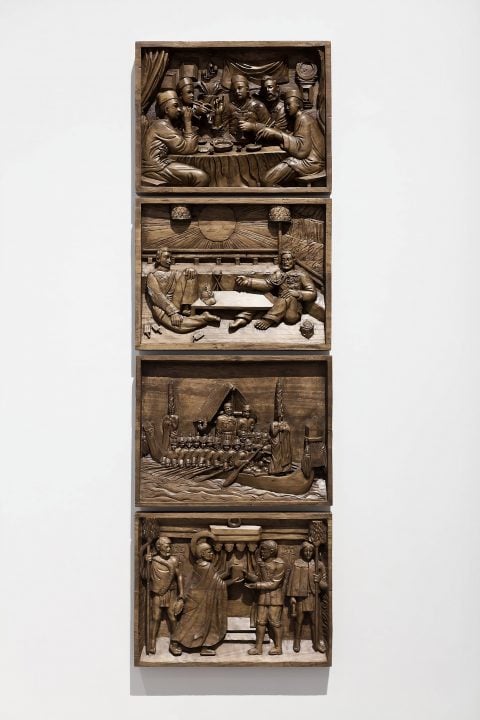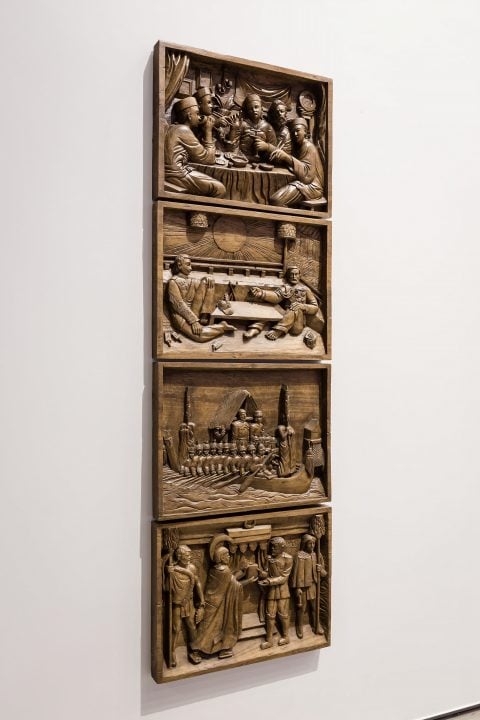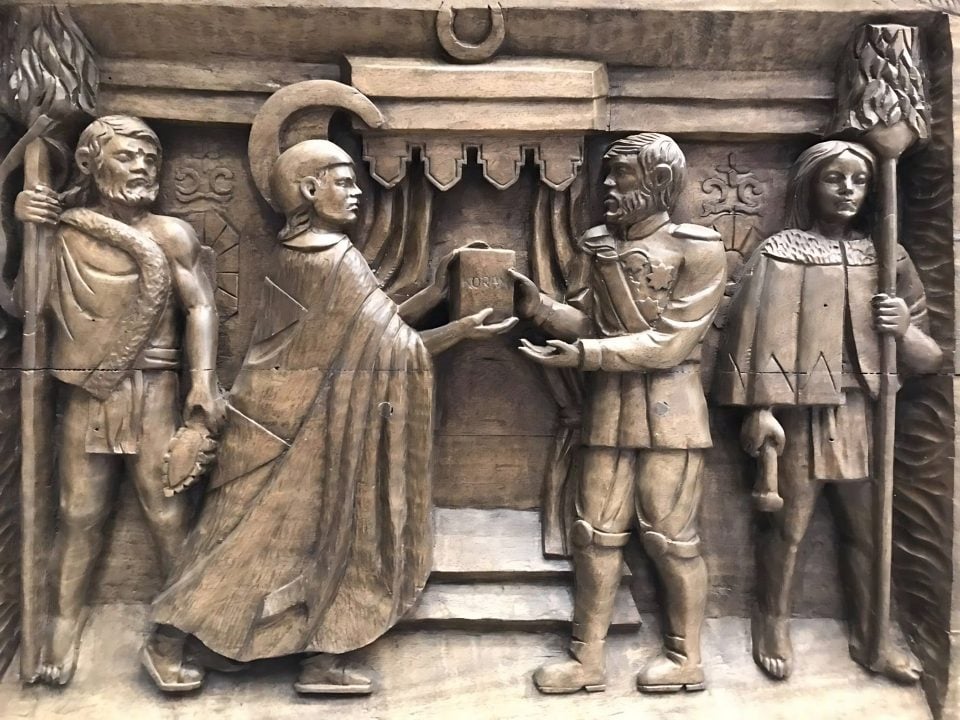UNSW Galleries
King Kalakaua’s Hawaiian Travels/Melayu Pono’I, 2017–18
four carved Gemelina wooden panels
Courtesy the artist
Remembered endearingly as the ‘Merri Monarch’, Hawaii’s King Kalakaua is credited with reviving many Hawaiian customs including Hula, in a reign defined by both cultural rejuvenation and devastation.
After the British took control of Fiji in 1874, the remaining independent island groups in the Pacific – Tonga, Hawai‘i, and Sāmoa – were at risk of European or US annexation. As depicted by Simon Soon in Melayu Pono’I, King Kalakaua embarked on an international trip with the goal to secure the independence of his kingdom and its global position.
The King, in the words of the US consul, was “inflamed by the idea of gathering all the cognate races of the Islands of the Pacific into a great Polynesian Confederacy”. Meeting with the consul-general of China in San Francisco, then with the monarchs of Japan, Siam, and Johor, the King sought to garner support for his anti-colonial confederacy.
Yet, much how a drowning man’s final breath may be his biggest, the confederacy never came to be, despite the King’s daring. In 1887 he would agree to a new constitution which led to the American annexation of the Kingdom of Hawai’i in 1898. Known as the Bayonet Constitution, he signed it at gunpoint.
Collaborating with a Filipino illustrator and craftsman in the bas-relief language that memorialised many nation-building projects throughout Southeast Asia, Soon’s Melayu Pono’I connects Kalakaua’s aspirations with the first political uprising in Asia, the Philippine Revolution, simultaneously propelling folk and craft history into the realm of national consciousness.




